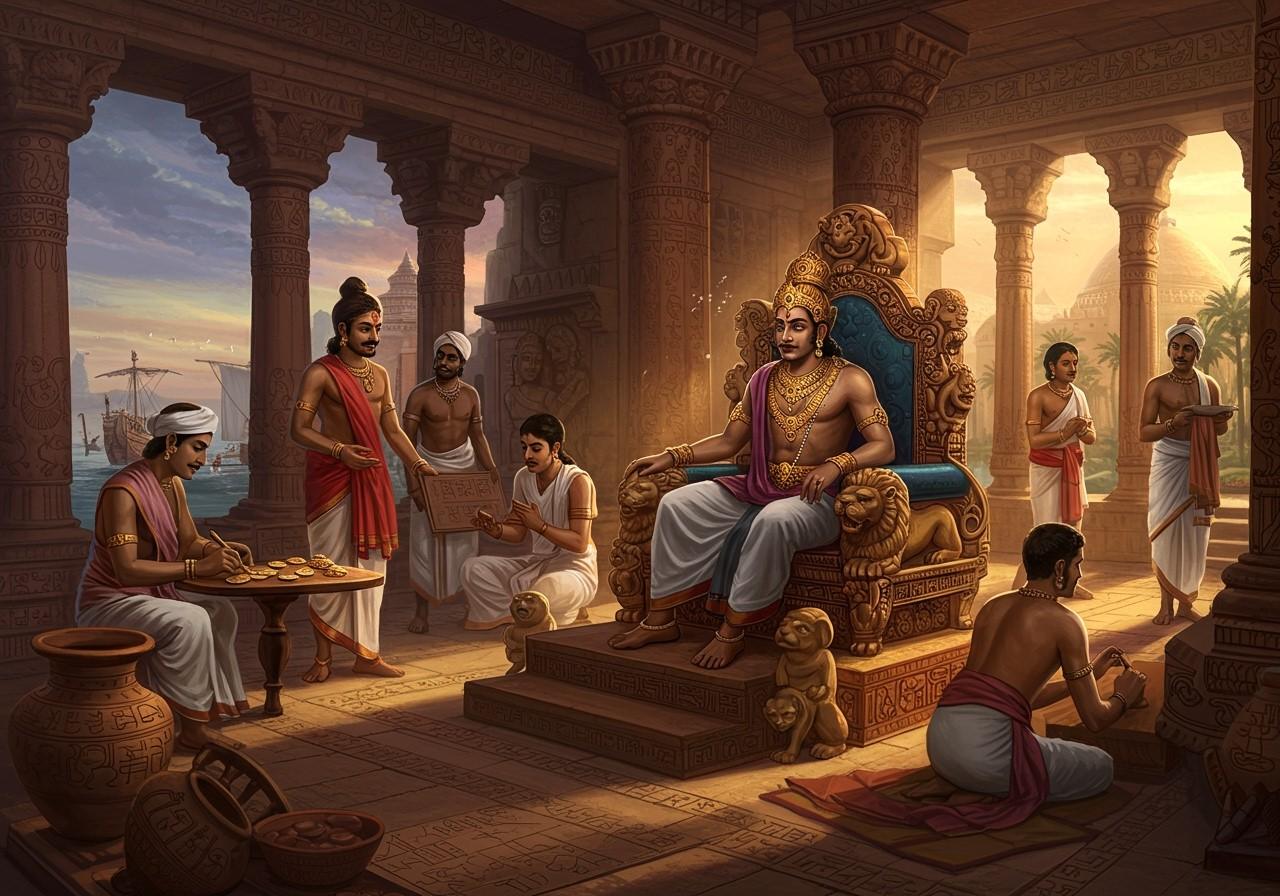
The Satavahana dynasty, also known as the Andhras, significantly shaped India’s language and culture from the late 2nd century BCE to the early 3rd century CE. Understanding their linguistic and cultural nuances offers a deeper appreciation for Indian heritage and rituals. This article delves into the language, communication, and cultural practices of the Satavahanas, providing valuable insights for those who cherish tradition and historical authenticity.
Historical Overview of the Satavahana Dynasty
Emerging in the late 2nd century BCE, the Satavahanas built the first Deccanese empire in southern India. Their reign extended across regions now known as Andhra Pradesh, Maharashtra, Telangana, Karnataka, and Madhya Pradesh. Prominent rulers like Gautamiputra Satakarni and Vasishthiputra Pulumavi solidified the dynasty’s legacy. Their administration was centralized, employing effective governance and leveraging maritime trade for economic prosperity.
Language of the Satavahanas
Prakrit, with regional variations, served as the primary language of the Satavahanas. Sanskrit, evident in official inscriptions and literature, also exerted a significant influence. Local dialects enriched daily communication and cultural expression. Inscriptions and coins reveal the Satavahanas’ linguistic preferences, suggesting the use of Telugu and other Dravidian languages within their domain.
Official Communication and Inscriptions
Satavahana inscriptions offer invaluable insights into their language, administration, and cultural practices. The Nashik and Nanaghat inscriptions are particularly significant, showcasing the official language and script. The Brahmi script evolved during their rule, appearing in administrative records and cultural pronouncements. These inscriptions facilitated public communication, religious practices, and royal declarations. Modern historians and archaeologists meticulously study these inscriptions to preserve this rich history.
Satavahanas and Telugu Culture
The connection between the Satavahanas and Telugu culture remains a topic of ongoing scholarly discussion. While some scholars propose a predominantly Telugu-speaking populace, based on cultural and linguistic evidence, others contest this view. Telugu culture undoubtedly influenced Satavahana art, literature, and religious practices. The integration of Telugu-speaking regions into their empire further enriched their cultural tapestry.
Cultural Practices and Traditions
The Satavahanas left an indelible mark on art, architecture, and religion. Their patronage of both Buddhism and Hinduism led to the construction of magnificent stupas, temples, and cave complexes like Ajanta and Ellora. Their artistic expression encompassed sculptures, paintings, and pottery. They fostered literary growth, with works composed in both Prakrit and Sanskrit. Traditional festivals and rituals reflected their diverse religious affiliations.
Art and Architecture
The Satavahanas’ artistic legacy is exemplified by the intricate carvings of the Amaravati Stupa and the architectural marvels of the Ajanta and Ellora caves, adorned with sculptures and paintings depicting Jataka tales. These structures stand as testaments to their artistic vision and craftsmanship.
Learn more about ancient temple architecture.
Religious Practices
The Satavahanas embraced both Buddhism and Hinduism, constructing Buddhist stupas and viharas like the Kanheri Caves near Mumbai, alongside Hindu temples, showcasing their respect for diverse religious traditions. This inclusivity is a hallmark of their reign.
Literature and Language
Prakrit, prominently featured in inscriptions, and Sanskrit influenced Satavahana literature. The Gatha Saptashati, a collection of Prakrit poems, offers a glimpse into their daily life and emotions, reflecting the literary landscape of the era.
Festivals and Rituals
Traditional festivals held great importance in Satavahana culture. Religious events were celebrated with fervor, and rituals conducted in temples and stupas attracted devotees from far and wide, fostering a sense of community and shared belief.
Poojn.in: Connecting You to Satavahana Heritage
At Poojn.in, we offer authentic ritual items that bridge the gap between the present and the rich Satavahana heritage. Our curated collection includes:
- Traditional copper and brass vessels: Reminiscent of those used in Satavahana times, these vessels add authenticity to your rituals. We offer a variety of sizes and designs to suit your specific needs.
- Pure cotton vastrams and dhoti materials: Reflecting ancient textile traditions, our pure cotton fabrics are perfect for religious ceremonies and everyday wear. Experience the comfort and purity of traditional clothing.
- Handcrafted puja items: Made using traditional methods, our handcrafted items bring a touch of authenticity to your puja space. Each piece is carefully crafted with attention to detail.
- Natural incense and dhoop materials: Sourced from authentic suppliers, our natural incense and dhoop create a sacred atmosphere for your rituals. Enjoy the pure and natural fragrances.
Explore our collection of pure cotton asans for your puja.
We provide detailed information about the significance and proper usage of each product. Our multilingual customer service team is available to assist you in selecting the right items for your needs. Visit Poojn.in today to explore our complete range and experience the legacy of the Satavahanas.
Conclusion
The Satavahana dynasty’s cultural heritage stands as a testament to their artistic vision, religious inclusivity, and literary contributions. Their legacy continues to inspire and enrich Indian culture, reminding us of the importance of preserving and honoring our traditions.
FAQs
What language did the Satavahanas speak? The Satavahanas primarily spoke Prakrit, an ancient language documented in numerous inscriptions.
Was Prakrit the official language of the Satavahanas? Yes, Prakrit served as the official language for inscriptions and administrative records.
Did the Satavahanas use Sanskrit? While less common than Prakrit, Sanskrit was also used, particularly in literature and official contexts.
Are the Satavahanas related to Telugu culture? The Satavahanas ruled over regions now part of Andhra Pradesh, influencing the early development of Telugu culture.
What scripts did the Satavahanas use for writing? The Brahmi script was primarily used for inscriptions in Prakrit and occasionally Sanskrit.
Did the Satavahanas have a rich cultural heritage? Yes, their cultural heritage encompasses significant advancements in art, architecture, and literature.
What are some key cultural contributions of the Satavahanas? Their contributions include advancements in Buddhist art, exemplified by the Amaravati Stupa, and the development of cave architecture at Ajanta and Ellora.
Explore the cultural heritage journey of Khajuraho and Kandariya Mahadeva.
How did the Satavahanas influence later Indian culture? The Satavahanas laid the groundwork for subsequent cultural and linguistic developments in the Deccan region, impacting later dynasties and shaping the cultural landscape.


